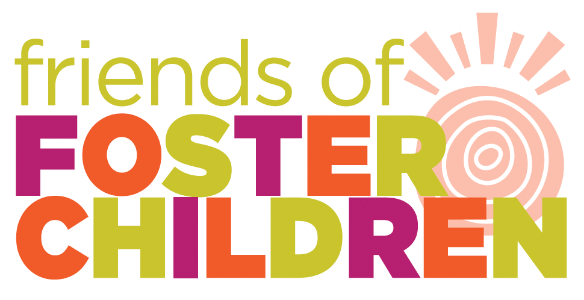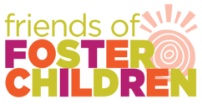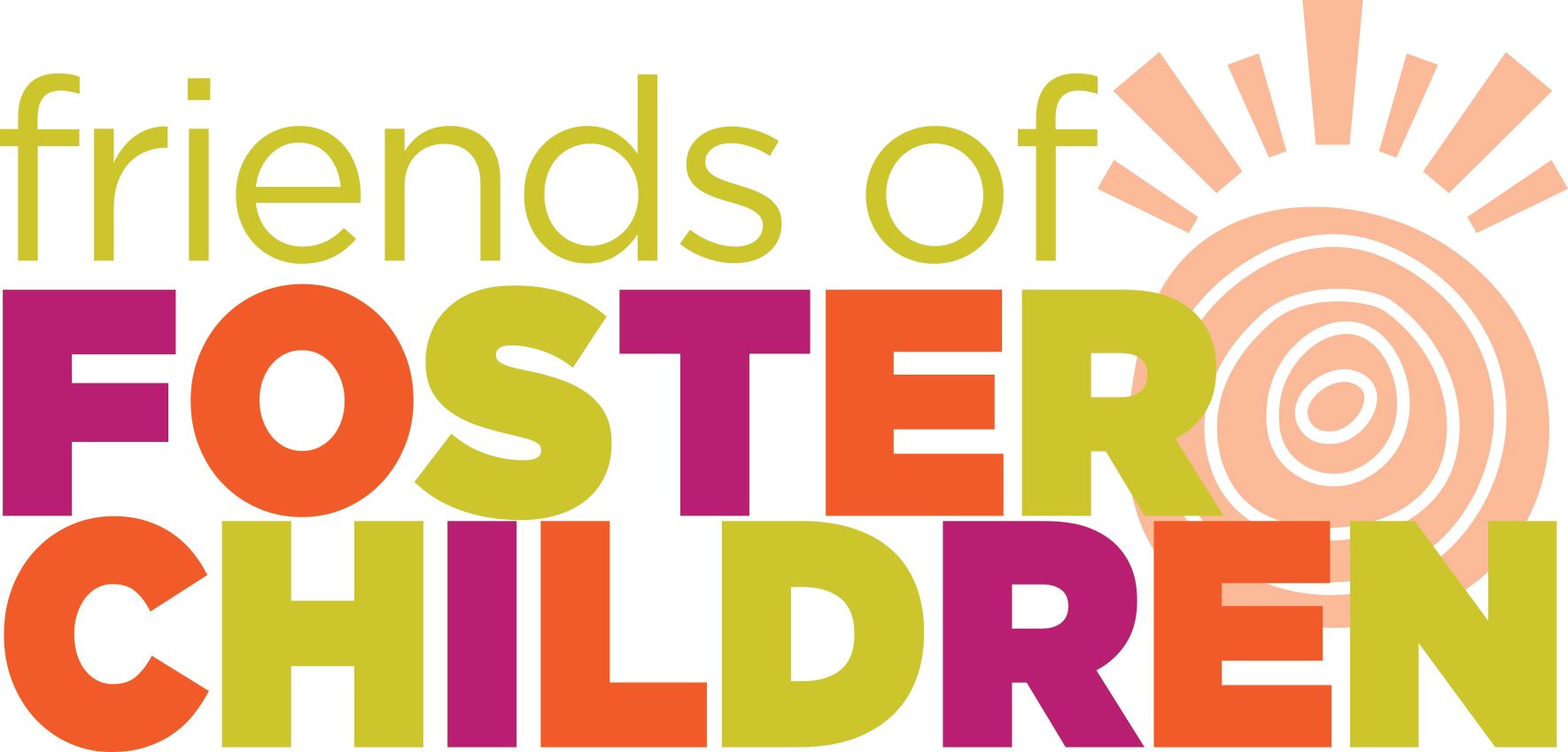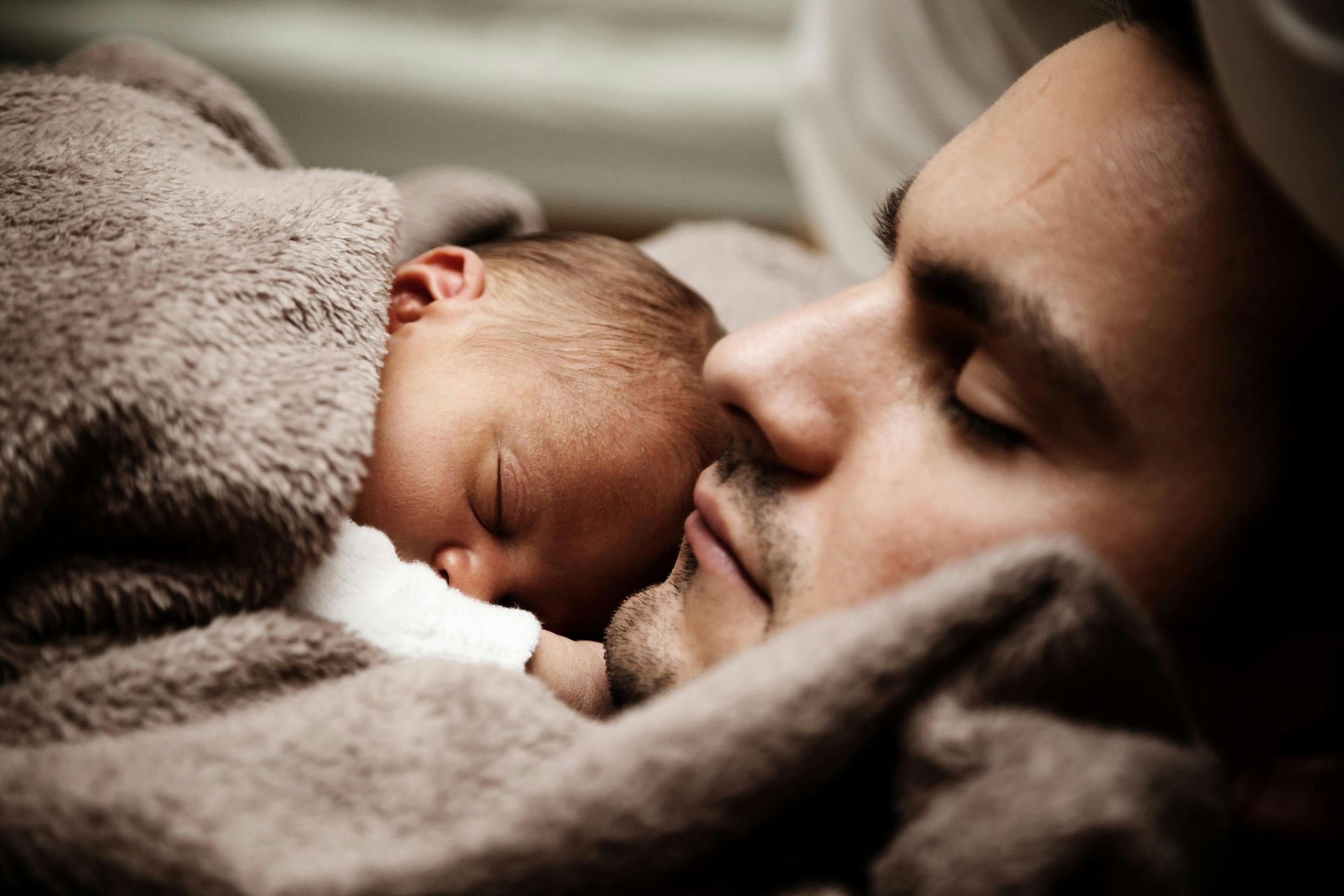Fostering Happy Childhood Stories Blog
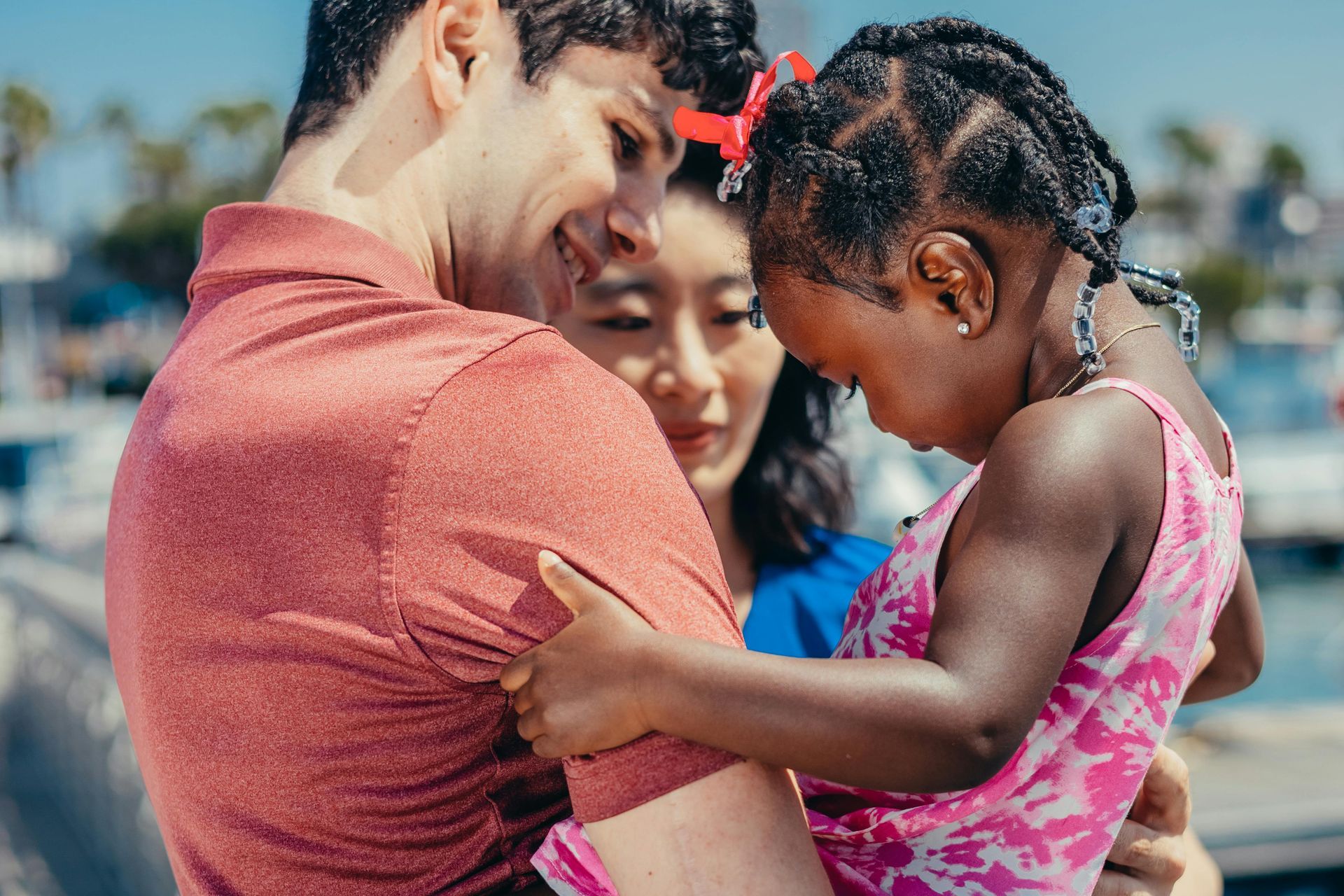
When you hear the phrase “foster care child,” what comes to mind? For some, it's a vague image of a child who doesn’t live with their parents. For others, it's a term they’ve heard in passing on the news or in movies but never fully understood. The truth is, behind every foster care child is a story. A story of resilience, of challenge, of hope — and often, a story that begins with pain but doesn’t have to end there. In this article, we’ll explore what a foster care child is, why children enter the system, what their experiences might look like, and how we — as a community — can better support them. Whether you’re someone considering foster parenting, an educator, or simply a curious and compassionate person, this guide is for you. Understanding the Basics: What Is Foster Care? Foster care is a system in which a child who cannot safely live with their biological family is placed in a temporary home with a licensed caregiver, often called a foster parent. The goal is to provide the child with safety, stability, and support during a time of crisis or transition. A foster care child, then, is any child or teenager living in this temporary arrangement, not because of anything they’ve done wrong, but because the environment they came from was not safe or stable enough to meet their needs. Why Do Children Enter Foster Care? Children are placed in foster care for a variety of reasons, and it's important to understand that these situations are often complex. Here are some of the most common reasons: 1. Abuse or Neglect This is one of the leading causes. If a child is experiencing physical, emotional abuse — or severe neglect — child protective services may intervene to remove the child and place them in a safer environment. 2. Parental Substance Abuse Substance addiction can make it difficult or even dangerous for parents to care for their children. In these cases, children may be removed to ensure they are not exposed to harmful environments. 3. Mental Health Challenges Parents with untreated mental health disorders may struggle to provide consistent care. In some situations, the child may also have mental health needs that require specialized care outside the home. 4. Domestic Violence Even if the child is not the direct victim, witnessing violence in the home is deeply traumatic. Foster care can offer safety and a more peaceful environment. 5. Incarceration When a child's only parent or guardian is incarcerated and no relatives can step in, foster care becomes a temporary solution. 6. Death or Illness Tragedy can strike any family. When a parent becomes seriously ill or passes away, and there are no other caretakers, children may enter foster care. 7. Homelessness or Extreme Poverty Sometimes, families love their children deeply but simply can’t provide the basic necessities due to extreme financial hardship or housing instability. Who Are Foster Care Children? Foster care children are just like any other children — they dream, they laugh, they play, and they long for love and stability. But many have experienced trauma, instability, or loss. Their journey is not defined by where they came from, but by the support and care they receive along the way. Some facts about foster care children: They range in age from infants to teenagers, with the average age being around 8. Some are part of sibling groups who hope to stay together. Many have experienced multiple placements, moving from one home to another. Some may have emotional or developmental needs due to early-life trauma. Many are still connected to their birth families and hope to be reunited one day. What Does Life Look Like for a Foster Child? Every foster child’s experience is unique, depending on their background, age, and placement. But there are some common threads: 1. Frequent Change Some children may move multiple times due to issues with placements, lack of resources, or the challenges of matching them with the right family. Each move can be disruptive and emotionally exhausting. 2. Navigating the Unknown Foster children often live with uncertainty — not knowing where they’ll live next, when they’ll see their parents again, or whether they’ll stay in the same school. These unknowns can be deeply unsettling. 3. Loss and Grief Even if the home was unsafe, being removed from it is still a loss. Children grieve not only their parents but also their routines, belongings, pets, and communities. 4. Moments of Hope During challenges, many children experience moments of kindness and connection that change their lives — a warm foster home, a caring teacher, a stable routine, a holiday celebration. These experiences are powerful. What Is the Goal of Foster Care? The main goal of foster care is reunification. That means working with the biological family to address the issues that led to the child’s removal so the family can be safely reunited. But that’s not always possible. If it’s determined that a child cannot return to their biological family, other long-term solutions may include: Adoption Guardianship by a relative Long-term foster care, particularly for older youth nearing adulthood Regardless of the outcome, the system aims to ensure permanency, stability, and well-being for each child. The Role of Foster Parents Foster parents are everyday people who open their homes and hearts to children in need. They receive training, support, and guidance — but most importantly, they provide: Structure Safety Compassion Guidance Great foster parents help children heal from trauma, trust again, and thrive in a loving environment. They also work closely with caseworkers, therapists, and often the birth family to help support reunification efforts whenever possible. Common Misconceptions About Foster Care Children Let’s take a moment to address some myths: Myth 1: Foster kids are “bad” or “troubled.” Truth: Foster children are not bad — they are often reacting to trauma. With love and support, they thrive just like any other child. Myth 2: They’re all orphans. Truth: Most foster children have living parents. They’re in care due to unsafe situations, not because their parents passed away. Myth 3: They’re too damaged to help. Truth: Every child has the ability to grow, heal, and succeed with the right environment and support. A Real Story: A Glimpse of Possibility Consider the story of Anthony, a teen who entered foster care at age 13 after years of instability at home. He was quiet, withdrawn, and behind in school. But when he moved in with a foster family who welcomed him with open arms, everything began to change. They encouraged him to join the basketball team, supported his tutoring, and listened to him when he was ready to talk. Today, Anthony is a college freshman studying social work, and he dreams of one day helping other kids like him. His story is just one of thousands, and proof that foster care can change lives. How Can You Help? You don’t need to become a foster parent to make a difference in the life of a foster care child. Here are ways to get involved: Mentor a youth in care through a local nonprofit. Donate clothing, books, or school supplies. Support organizations that provide training and resources to foster families. Advocate for child welfare policy improvements. Educate others about what foster care really is. Even a single gesture — a backpack for school, a holiday gift, a word of encouragement — can remind a child they are seen and valued. So, What Is a Foster Care Child? A foster care child is a child who needs us. They are not defined by where they came from, but by who they can become with love, safety, and opportunity. They are strong, courageous, and full of potential — just waiting for the right person to believe in them. And perhaps that person could be you. Because at the end of the day, a foster care child is simply a child who deserves a chance, and with your support, they can have it. Help caregivers provide loving homes for children in need. Your donation makes a difference today.
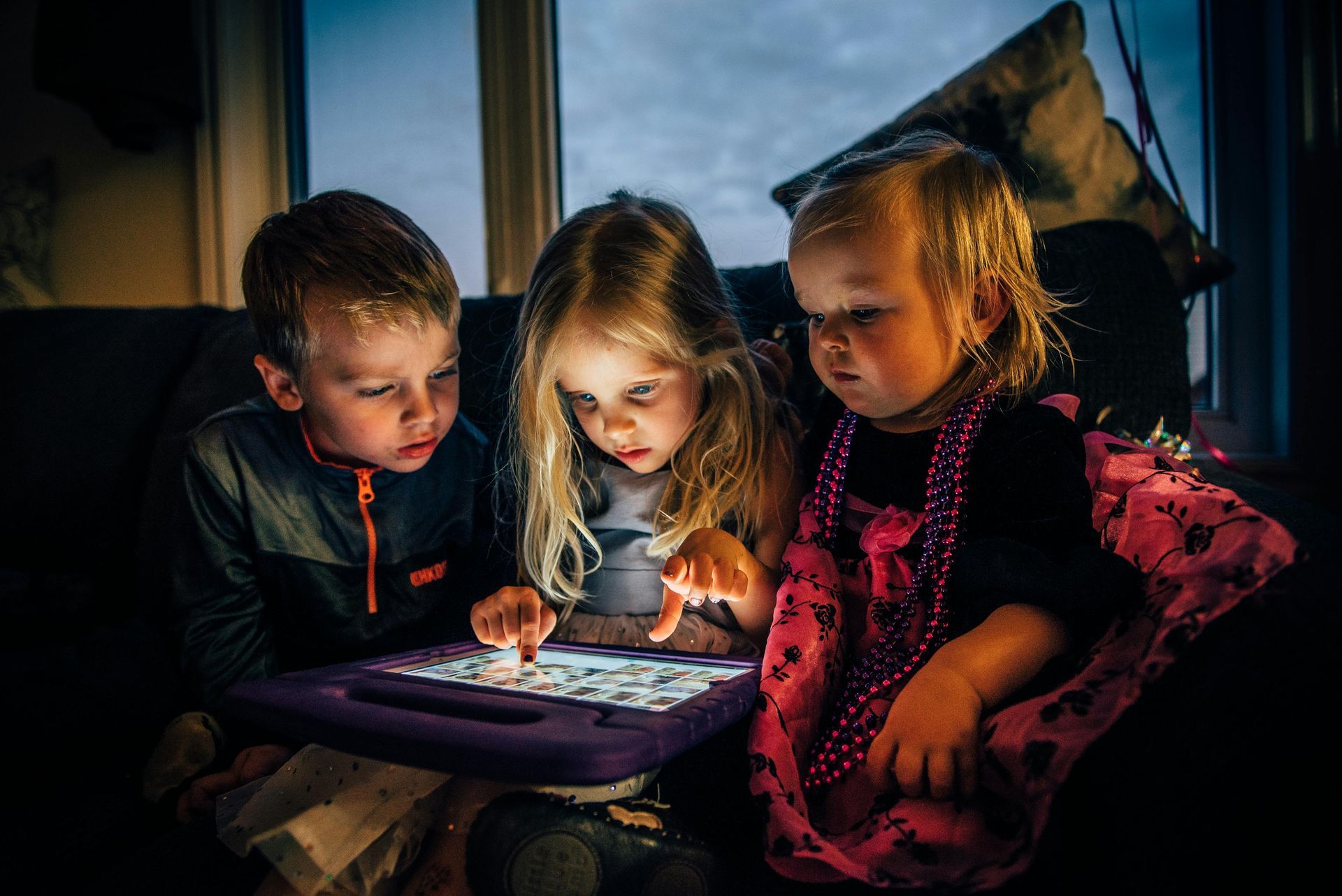
For Academy Award-winning actor Christian Bale, playing Batman was just one of many roles. But his real-life mission to support children in foster care is proving to be the role of a lifetime. In February 2024, Bale broke ground on a visionary project 16 years in the making: Together California, a foster care village in Palmdale, California, designed to keep siblings together in a nurturing and supportive environment. With 12 homes and a community center on the way, this initiative is more than a construction project—it is a heartfelt commitment to transform the lives of foster children and reimagine how we care for them. The Inspiration Behind the Mission Bale's passion for foster care began in 2008, around the time he was filming "The Dark Knight" and his daughter was just three years old. As a father, the idea of his child being separated from family struck a personal chord. His curiosity turned into concern when he learned about the staggering number of siblings who are split up in the foster care system. "And so you imagine the trauma of that, you know? But added trauma to being taken from your parents, and then you lose your siblings," Bale said in an interview with CBS. "That's just something that we shouldn't be doing." This realization sparked a long and winding journey—one that would eventually lead to the creation of Together California. Despite having no personal history with foster care, Bale's unwavering belief that children should remain with their siblings became the heartbeat of his mission. "It just requires having a heart," he said. The Birth of Together California Bale didn't take the idea lightly or approach it as a casual celebrity endeavor. Instead, he dived deep into the world of foster care, visiting foster homes, attending child welfare meetings, and seeking counsel from those with direct experience. In Chicago, he met Tim McCormick, who had decades of experience running foster care programs. Their meeting led to a collaboration that would eventually bring Together California to life. Bale and McCormick teamed up with Dr. Eric Esrailian, a UCLA physician and film producer, to co-found the nonprofit. Their shared goal: build a village in California where foster siblings could grow up together, supported by caring adults and surrounded by a stable environment. "This is what this site is about," Bale said. "We create a place for authentic goodness to flourish. And it certainly impacts a child, but it impacts all of us. We create a different story of us as a society." Why Palmdale? Palmdale, a city located about 60 miles north of Los Angeles, may not be the first place that comes to mind when you think of celebrity projects. But for Bale and his team, it was the perfect location. The city had both a significant need and a willingness to support the initiative. With the backing of local leaders, including LA County Supervisor Kathryn Barger and Palmdale Mayor Austin Bishop, the project found fertile ground. "He said we've got to do this in California," McCormick noted. "To his credit, through all sorts of challenges, COVID and everything else, he never gave up." A Village Built on Purpose Together, California’s design is both practical and visionary. The village will consist of 12 homes arranged around a central community center, creating a sense of unity and shared purpose. Each home is intended to house groups of siblings and will be staffed by trained foster parents dedicated solely to their care. The community center will serve as a hub for educational support, therapy, and recreational activities. It’s not just about shelter—it's about creating a holistic environment where children can heal, grow, and thrive. "I had a very naive idea about kind of getting a piece of land and then, bringing kids in and the brothers and sisters living together and sort of singing songs like the Von Trapp family in 'The Sound of Music,'" Bale said, reflecting on how far the project has come. "But it's way more complex. These are people's lives." Designing with Heart Architects at AC Martin were brought on board to bring the vision to life. Though the firm is more known for large-scale urban projects, this small village is one of their proudest undertakings. "This is small but I'm tremendously proud of this project," said AC Martin CEO Tom Hsieh. "I think we're at a point in our society where we have to help. And for me—as exciting as creating the next high-rise—we need to give back to society and community." Bale, a design enthusiast himself, was deeply involved in the process. “I love designing. I love architecture,” he said. “So I adore the whole design process. And actually seeing it really coming to happen is just very, very exciting.” More Than Just a Building Project Though the homes are expected to be completed by April 2025, Bale sees this as only the beginning. The construction of these homes is part of a much larger dream—to reshape how foster care is handled across the nation. “Maybe this is the first one, and maybe this is the only one, and that would be great,” he said. “But I’m quietly hoping that there’ll be many of these.” His hope is to provide a model that can be replicated in other communities, allowing more foster children to stay with their siblings and grow up with the love and stability they deserve. The Heart of the Matter Bale’s efforts are deeply rooted in empathy, humanity, and a sense of responsibility. He believes that while not everyone can become a foster parent, everyone can contribute in some way—by listening, learning, volunteering, or supporting foster care organizations. "This is something that when, you know, I'm closing my eyes for the last time, I wanna look and say...think about, 'Did I do some good? Did I make any changes in the world that were useful?" Bale said. "And this will be one of the things that I'll be most proud of when I draw my last breath." A Message for All of Us At Friends of Foster Children, we believe Christian Bale’s story serves as an inspiring reminder that anyone can make a difference, no matter their background or career. What matters most is heart, persistence, and a genuine desire to help. Friends of Foster Children is proud to serve children and families right here in Palm Beach County, Florida—working every day to ensure that every child has the chance to grow up in a loving, supportive environment. Whether you are a parent, a business owner, a volunteer, or someone who simply cares, you have the power to support children in foster care. And just like Bale, you don't need to have a personal connection—you just need to care enough to act. What You Can Do If Christian Bale’s mission inspires you and you want to help make a difference in your community, here are a few ways to start: - Support local foster care organizations like Friends of Foster Children with donations or sponsorships. - Volunteering your time—from tutoring to organizing events, every bit helps. - Advocate for sibling preservation policies in your state or local government. - Spread awareness by sharing stories like Bale’s to inspire others. Together, we can help rewrite the story for foster children—one home, one sibling group, and one act of kindness at a time. Join Us in Supporting Foster Families and Children At Friends of Foster Children, we celebrate efforts that put children first. Join us in creating a world where every child has a safe place to grow—and every sibling has the chance to stay together. Help caregivers provide loving homes for children in need. Your donation makes a difference today.
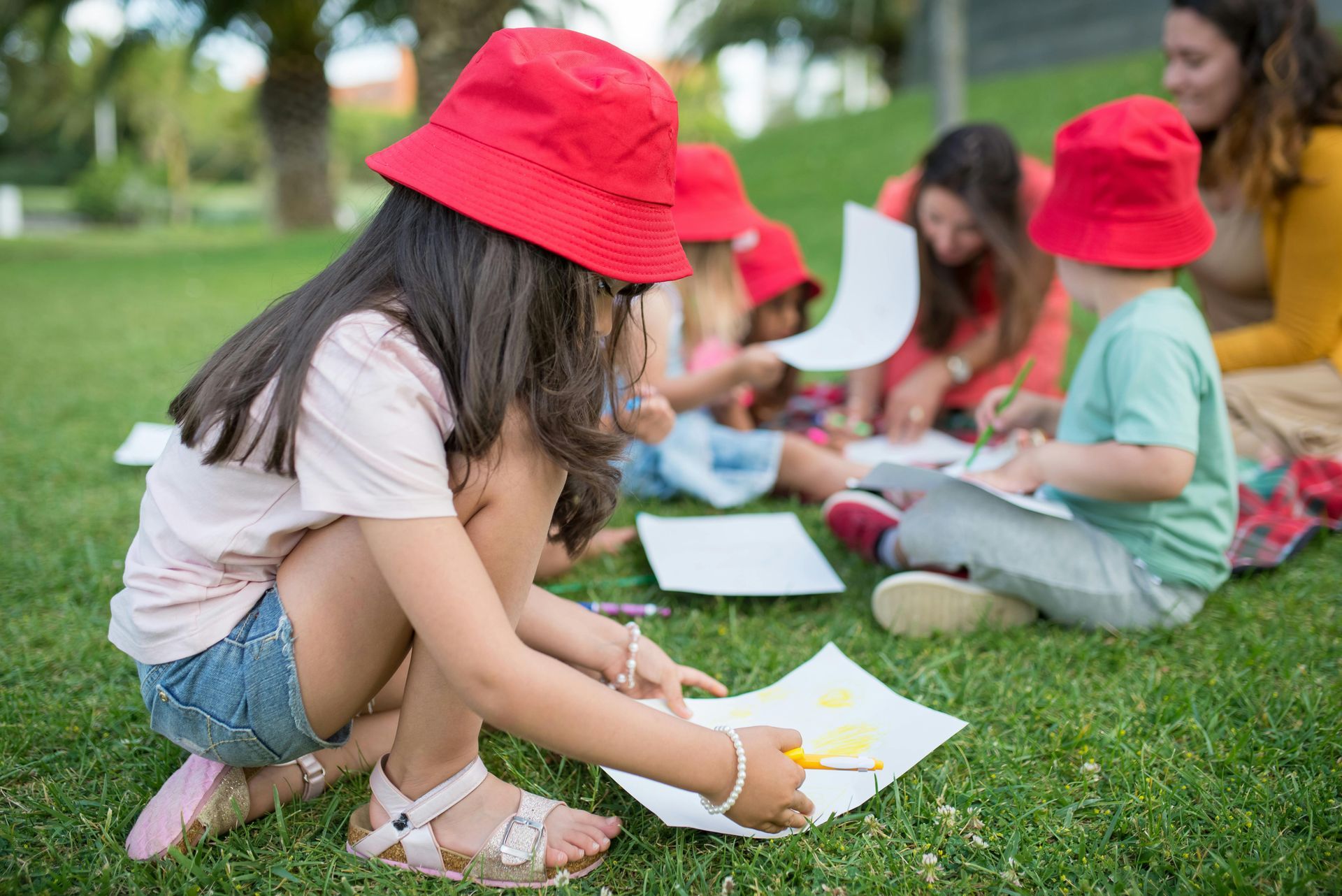
Foster care is often seen as something that primarily affects low-income families or those facing significant hardship. Many people assume that children in the foster care system come from homes marked by financial struggle, instability, or neglect. While these challenges are indeed a reality for many, they are not the defining factors of foster care. The truth is, foster care doesn’t choose social class. It chooses children who need love, stability, and care, no matter their background or where they come from. The Truth About Foster Care Foster care isn’t about economic status. It’s about compassion. It’s about stepping up for a child who has experienced trauma, loss, or instability and offering them the chance for something better. Every year, children enter the foster care system from a variety of circumstances: some come from families facing financial difficulties, while others may be affected by mental health issues, substance abuse, or even death. These circumstances are often out of their control, and no child should ever feel that their future is limited by the struggles of their parents or caregivers. But here’s the thing: love and support can come from anyone, regardless of social class. When a child enters the foster system, what they need most isn’t wealth, but a safe, loving, and consistent environment. And that can come from any home, whether it’s a spacious house in the suburbs, a modest apartment in the city, or even from a single person who is willing to give all the love they can offer. Love, Not Wealth, Creates Change When it comes to fostering, it’s not about how much you have, but how much you’re willing to give. Foster families don’t have to be rich or famous; they just need to be willing to make a difference. Financial resources certainly help, but it’s the ability to provide emotional security, stability, and love that truly transforms a child’s life. Take the story of Tiffany Haddish, for example. While she grew up in foster care herself, she has also become a fierce advocate for foster children. In interviews, she spoke about how her own experiences shaped her view on the importance of love and care over material wealth. She said that even though her childhood wasn’t filled with abundance, it was filled with people who cared for her, and that’s what truly made the difference. Haddish’s story proves that no matter what your background, you can step up and offer a child the most valuable thing they need — love and care. Despite her challenging beginnings, she now uses her platform to raise awareness about foster care and advocate for children who need a safe place to grow and thrive. Anyone Can Foster It’s easy to believe that you need a large house, a high-paying job, or a perfect life to be a foster parent. But the truth is, you don’t need all these things to provide a child with a better future. What matters most is that you’re there for them when they need you the most. Foster care is not about perfection; it’s about offering what you must give. Whether you have a small apartment or a large home, whether you’re single, married, or living with a partner, you can make a real difference. And it’s not about providing a lavish lifestyle, it’s about offering consistency, stability, and care. It's about being present, offering a listening ear, and showing that love is unconditional and unwavering. When we think about foster care, it’s important to remember that it’s not just about financial resources. A simple act of kindness, a safe environment, and consistent support can have a profound impact on a child’s future. That’s what truly changes lives. The Power of Everyday People The beauty of foster care is that anyone, regardless of their background, has the ability to make a lasting impact. There are countless stories of individuals who didn’t come from wealth, who didn’t have everything figured out, but who stepped up and became foster parents because they saw a need and knew they could make a difference. Consider the many everyday heroes who open their homes and hearts to children in need. These individuals might not be famous, but their actions are no less significant. They are the unsung champions who help children feel safe, loved, and supported. They create stability in uncertain times, offering hope where there may be none. They provide guidance, comfort, and a sense of belonging. What’s more, when you are fostered, you’re not just helping a child — you’re impacting generations. You’re giving a child the tools they need to thrive, to break the cycle of trauma, and to create their own future of possibilities. In fostering, the simple act of loving and caring for a child can ripple outward, influencing their lives and the lives of those they will touch in the future. A Better Future for Every Child It’s important to remember that foster care is not a reflection of what someone lacks — it’s about what they have to offer. Some of the most impactful foster parents come from modest backgrounds. What they may not have in financial resources, they more than make up for with love, compassion, and a willingness to help a child feel seen and valued. Foster care is not charity. It’s not about giving what you have left over. It’s about giving with all your heart. And when you do that, the rewards are immeasurable — not just for the child you’re helping, but for you as well. The love and gratitude that flow from a child who knows they are cared for is a gift that no amount of money can buy. Conclusion: Love Is Universal Foster care doesn’t discriminate. It doesn’t matter where you come from, what your bank account looks like, or what your family history is. What matters most is that you show up for a child when they need it most. When you open your heart and home, you’re not just changing a child’s life — you’re helping to create a better future for all of us. And as Tiffany Haddish’s story shows, no matter how difficult the journey may be, love and care can come from anyone. Foster care is about compassion, understanding, and showing up, no matter your background. If we all embrace that truth, we can create a world where every child has the chance to feel safe, loved, and valued, no matter what their social class. Because, in the end, love is the one thing that knows no boundaries. Help caregivers provide loving homes for children in need. Your donation makes a difference today.

There’s a quiet myth that’s kept too many loving people from opening their hearts to children who need them. It doesn’t shout. It whispers — planting doubt where there could be hope. Myth: Only younger people can foster. Truth: The only requirement is that you must be over 21. People start fostering at all stages of life. This idea — that fostering is only for the young — overlooks something deeply important. It overlooks the kind of love that comes with time. The calm steadiness that age brings. The lessons learned, the compassion deepened, the patience grew. We’ve seen it time and time again: a grandmother who thought her parenting days were long behind her, a single man in his 50s who felt a pull he couldn’t ignore, a couple whose own children were grown and gone, suddenly finding room again — in their homes and in their hearts. No age defines readiness to foster. There is only love. NBA legend Alonzo Mourning is one of many who know what that kind of love looks like. When he was just 10 years old, his parents’ divorce left him at a crossroads. He entered the foster care system, and into his life stepped Fannie Threet — not a young woman just starting, but an experienced, warmhearted foster mom who had already cared for 49 children. Fannie welcomed Alonzo as she had the others, with gentleness, structure, and an open heart. And Alonzo? He didn’t want to leave. He later shared, “Once I walked in, I never wanted to walk out.” She wasn’t the youngest. But she was exactly what he needed. Love like that isn’t measured in years. It’s measured in presence. In listening. In showing up. In being the kind of steady that a child can lean on when the world has been anything but. There are people right now who don’t think they’re the “type” to foster. Maybe they’ve had their own families. Maybe they’ve weathered heartache or are just settling into a quieter chapter. But that’s often when love has grown the deepest roots. Because fostering doesn’t ask how old you are. It simply asks, can you care? Can you offer safety, and kindness, and patience? Can you sit beside someone when they’re hurting and not turn away? The truth is: many people begin fostering later in life. And children thrive in homes filled with warmth, wisdom, and unwavering support — no matter how many candles were on the last birthday cake. Because what children need most isn’t youth. It’s love. And love has no age limit. Help caregivers provide loving homes for children in need. Your donation makes a difference today.

Some children grow up watching cartoons and dreaming of adventure. Others grow up watching quiet acts of love—moments that plant seeds of compassion deep within their hearts. That was the case for Ariel, who, from a very young age, witnessed the powerful impact of fostering through the example of her close relatives. While she may not have realized it at the time, those early experiences would shape her entire future. The Power of Witnessing Love in Action Ariel’s story doesn't start in a classroom or a psychology textbook, but in her living room. From a young age, she watched how her relatives opened their doors—and their hearts—to children in need. Some stayed for a few weeks, while others stayed for months or even years. All left a lasting impression. She recalls the toys shared, the birthdays celebrated, and the warm embraces exchanged. But more than that, she remembers the transformation. Children who arrived shy, scared, or closed off gradually began to bloom in the presence of consistent love and care. They laughed a little louder, smiled a little more freely, and started to trust. To Ariel, fostering didn’t just mean providing a home. It meant creating a haven where children could begin to heal, grow, and dream again. While many children her age were still learning the basics of kindness, Ariel was witnessing resilience, empathy, and the incredible strength it takes to love a child through their pain. A Seed that Grew into Service As Ariel grew older, the example her relatives set stayed with her. She often found herself drawn to causes that centered on children’s well-being. When she learned about Friends of Foster Children, she knew she had found a community that shared the same values she had been raised with. She began volunteering during school breaks, helping organize events, supporting fundraising campaigns, and showing up wherever she was needed. What started as a few hours here and there quickly became a passion. Whether it was wrapping holiday gifts or tutoring a child who had fallen behind in school due to multiple relocations, Ariel gave her time with the same kind of devotion she had once witnessed in her family. Volunteering wasn’t just something Ariel did—it became part of who she was. A Calling Turns into a Career While Ariel’s love for foster children was growing, so was her academic curiosity. She found herself captivated by how people heal, how trauma shapes us, and how relationships can rebuild what’s been broken. It didn’t take long for her to realize that she wanted to turn her compassion into a career. With a heart full of purpose, Ariel enrolled in a Master’s program in Clinical Psychology. It wasn’t easy—graduate school rarely is. But she brought with her a fire that couldn’t be extinguished. Every paper she wrote, every class she attended, and every late-night study session was motivated by her deep desire to help children who had endured more than most adults. And in the spring of this year, Ariel walked across the graduation stage, not just as a student, but as a symbol of how love and purpose can shape a life. Fulfilling a Promise to the Future To Ariel, her degree was never about titles or credentials. It was a promise fulfilled—a vow she made to herself and to the children whose eyes she had looked into while volunteering. She knew that completing her education was just the beginning. With her new skills and clinical knowledge, Ariel plans to work within the child welfare system to provide the kind of therapeutic support that so many foster children need. Her goal is simple but powerful: to help children and families realize their dreams, no matter how their stories begin. A Ripple Effect That Keeps Growing Ariel’s journey is just one story, but it shows the incredible ripple effect that fostering can have. Her relatives didn’t just change the lives of the children they welcomed into their home; they also inspired Ariel to dedicate her life to making a difference. And through her, countless more children and families will be impacted for years to come. That’s the beauty of this work. Every act of love creates waves that travel far beyond what we can see. Whether you’re a foster parent, a volunteer, a mentor, or a donor, your contribution matters. Just like Ariel, you have the power to change the course of a child’s life—and maybe even inspire the next generation of changemakers. How You Can Help Foster Dreams Children in foster care face challenges that most of us will never understand—but they also have dreams just like any other child. They want to feel safe. They want to be seen. They want to believe in the possibility of a better tomorrow. You Can Help Make Those Dreams Come True Volunteer with Friends of Foster Children. Whether you have an hour a week or a few days a month, your time can make an incredible difference. Help a child with their homework, mentor a teen aging out of the system, or lend a hand during special events. Foster a child. It’s not always easy, but it is always meaningful. Opening your home could be the beginning of someone else’s healing journey—and just like Ariel’s family, your act of kindness could inspire others to do the same. Donate to support programs that provide essentials, education, and emotional support for foster children. Every dollar helps us reach more kids, create more opportunities, and build stronger futures. Join Us in Making a Difference Ariel’s story is a testament to what happens when compassion is put into action. She reminds us that fostering isn’t just a system, it’s calling. A community effort. A promise to lift children up, even when life has let them down. At Friends of Foster Children, we believe in the power of stories like Ariel’s. They remind us that healing is possible, dreams are worth chasing, and love, especially the kind that shows up again and again, can change everything. Now It’s Your Turn Help foster children realize their dreams. Get involved today by volunteering , fostering a child , or making a donation . Together, we can make sure every child knows they are seen, valued, and deeply loved. Help caregivers provide loving homes for children in need. Your donation makes a difference today.
